Ayres to conduct flood mitigation study in Suamico
You searched for flood - The Press
You searched for flood - The Press
https://gopresstimes.com/2021/05/20/ayres-to-conduct-flood-mitigation-study-in-suamico/
You searched for flood - The Press
You searched for flood - The Press
https://gopresstimes.com/2021/05/20/ayres-to-conduct-flood-mitigation-study-in-suamico/
Another 200 points have been added since last week! IMPRESSIVE! Since this challenge is quickly approaching completion, we performed our spatial analysis to see which communities still need a point.
Wisconsin
http://www.usgs.gov/news/mapping-challenge-update-052021-city-town-halls-wi
Organizations are striving to make nature accessible to everyone.
The post Trails become friendlier for users with disabilities first appeared on Great Lakes Echo.Great Lakes Echo
http://greatlakesecho.org/2021/05/20/trails-become-friendlier-for-users-with-disabilities/
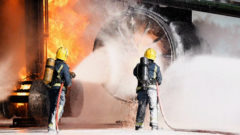
One lakeside town struggles with PFAS pollution from a local Air Force base, while cities around the region race to remove and replace thousands of lead water pipes. And after a year-long delay, Great Lakes sailors head to the “2020” Olympics.
Great Lakes Now
https://www.greatlakesnow.org/2021/05/cleanups-and-competitions-ep-1025/
The Southern Ontario Nature Coalition, a collection of environmental, Indigenous, and agricultural groups, have outlined plans for building a network of natural areas within the urban and suburban landscapes of southern Ontario to support conservation and resilience efforts around Lake Ontario. Read the full story by the National Observer.
Great Lakes Commission
https://www.glc.org/dailynews/20210519-roadmap
The Traverse City Board of Commissioners in Michigan unanimously voted to file an appeal to a judge’s ruling that requires the city’s FishPass Project to be put to a community vote before proceeding. The FishPass project would install a barrier to invasive sea lamprey along the Boardman River, but has received opposition from some residents. Read the full story by WWUP-TV – Cadillac, MI.
Great Lakes Commission
https://www.glc.org/dailynews/20210519-fishpass
The Biden Administration has not yet taken a position on the legal battle between Enbridge Energy and the State of Michigan over the Line 5 oil pipeline. The federal government is expected to become involved as legal questions arise around international treaties regarding Line 5 and issues of federal authority over managing pipeline operations. Read the full story by Michigan Advance.
Great Lakes Commission
https://www.glc.org/dailynews/20210519-line5
A years-long effort is underway in the Milwaukee harbor in Wisconsin to remove and dispose of contaminated sediment within the Milwaukee Estuary Area of Concern. Read the full story by Spectrum News 1.
Great Lakes Commission
https://www.glc.org/dailynews/20210519-aoc
After being hunted to the brink of extinction and wiped out in Michigan over 100 years ago, the trumpeter swam is making a comeback in part due to the efforts of the W.K. Kellogg Bird Sanctuary at Michigan State University. Read the full story by Michigan Radio.
Great Lakes Commission
https://www.glc.org/dailynews/20210519-swans
Researchers at the University of Wisconsin-Superior are studying whether less winter ice across the Great Lakes might enable year-round shipping. The Great Lakes traditionally shut down to shipping from early January into March. Read the full story by the Duluth News Tribune.
Great Lakes Commission
https://www.glc.org/dailynews/20210519-shipping
After decades of absence in the cold waters of Michigan, a successful collaboration between Michigan’s Department of Natural Resources and the Little River Band of Ottawa Indians has helped the arctic grayling make a return to their native habitats. Read the full story by WZZM-TV – Grand Rapids, MI.
Great Lakes Commission
https://www.glc.org/dailynews/20210519-grayling
Erie County, New York, pumps and treats over 20 million gallons of water a day from the Niagara River to provide drinking water to residents in the county. Read the full story by WKBW-TV – Buffalo, NY.
Great Lakes Commission
https://www.glc.org/dailynews/20210519-water
Growing demand for goods in Canada and the United States as the two countries’ economies recover has translated into a boost in the amount of goods shipped on the Great Lakes-St. Lawrence Seaway by nearly 4 percent. Read the full story by the St. Catharine’s Standard.
Great Lakes Commission
https://www.glc.org/dailynews/20210519-cargo
A new report about combining solar power and farming practices has advocates saying the practice could take hold in Michigan, boosting productivity while providing much needed refuge for bees and other pollinators.
The post Crops grown under solar panels and pollinator habitats could be wave of the future first appeared on Great Lakes Echo.Great Lakes Echo
http://greatlakesecho.org/2021/05/19/crops-grown-under-solar-panels-and-pollinator-habitats-could-be-wave-of-the-future/
We seek a highly motivated individual to lead the Alliance’s volunteer programs, which involve about 15,000 people each year across all five Great Lakes. The ideal candidate is a self-starter, a collaborator who works easily with many different types of people, and an extrovert with a passion for empowering others to make a positive change in the world.
The Volunteer Engagement Manager is on the front lines of engaging with and cultivating volunteers across the Great Lakes region. They will lead the Adopt-a-Beach program, which includes the Alliance’s flagship volunteer program that involves about 15,000 volunteers per year on all five Great Lakes and all eight Great Lakes states, and the Ambassador program, a growing “speakers bureau”-type program that currently involves about 200 volunteers per year. They will develop strategy for maintaining the Alliance’s regional volunteer leadership and manage program implementation.
They will also represent the Alliance at events across the region, speaking at community events and supporting large volunteer groups. The role is very hands-on with lots of contact with volunteers, nonprofit organizations, and business partners across the Great Lakes region. The Volunteer Engagement Manager is core member of the Alliance’s Communications & Engagement Team and will work closely with the Alliance’s fundraising team.
A typical day for the Volunteer Engagement Manager might look like this – The day begins with the Communications & Engagement Team’s daily 30-minute check-in video call, where the team shares out key updates from the previous day and discusses any key project changes. They may hop on a call with a member of the Alliance’s fundraising team and a potential new Adopt-a-Beach business sponsor. They might then gather supplies and run out to a Chicago-area beach to meet a large Adopt-a-Beach group to support the cleanup event and give a short thank you speech to the group about the impact of their clean up. In the afternoon, they might meet with the Volunteer Engagement Coordinator, their direct report, to brainstorm ideas for upcoming Ambassador training sessions and sort through Adopt-a-Beach questions and requests. And they might end the day in a meeting with the Alliance’s Database Manager to discuss options for fixing some technical bugs in the Adopt-a-Beach Salesforce database.
Management and Strategy
Outreach
Technical
Management
Please e-mail a cover letter, resume and references to: hr@greatlakes.org. Include job title in the subject line.
Applications will be accepted until the position is filled, with a desired start date of July 1, 2021. Materials should be compatible with Microsoft Word or Adobe Acrobat. Applicants will receive confirmation of receipt of their materials and further guidance and updates about the hiring process by e-mail, with interviews provided for finalists. No phone inquiries please.
The Alliance for the Great Lakes is an Equal Opportunity Employer. The search process will reinforce the Alliance’s belief that achieving diversity requires an enduring commitment to inclusion that must find full expression in our organizational culture, values, norms, and behaviors.
The Alliance’s vision is a healthy Great Lakes for people and wildlife, forever. Its mission is to conserve and restore the world’s largest freshwater resource using policy, education and local efforts, ensuring a healthy Great Lakes and clean water for generations of people and wildlife. For more information about the Alliance’s programs and work, please visit us online at www.greatlakes.org.
The post We’re Hiring a Volunteer Engagement Manager appeared first on Alliance for the Great Lakes.
News – Alliance for the Great Lakes
News – Alliance for the Great Lakes
https://greatlakes.org/2021/05/were-hiring-a-volunteer-engagement-manager/
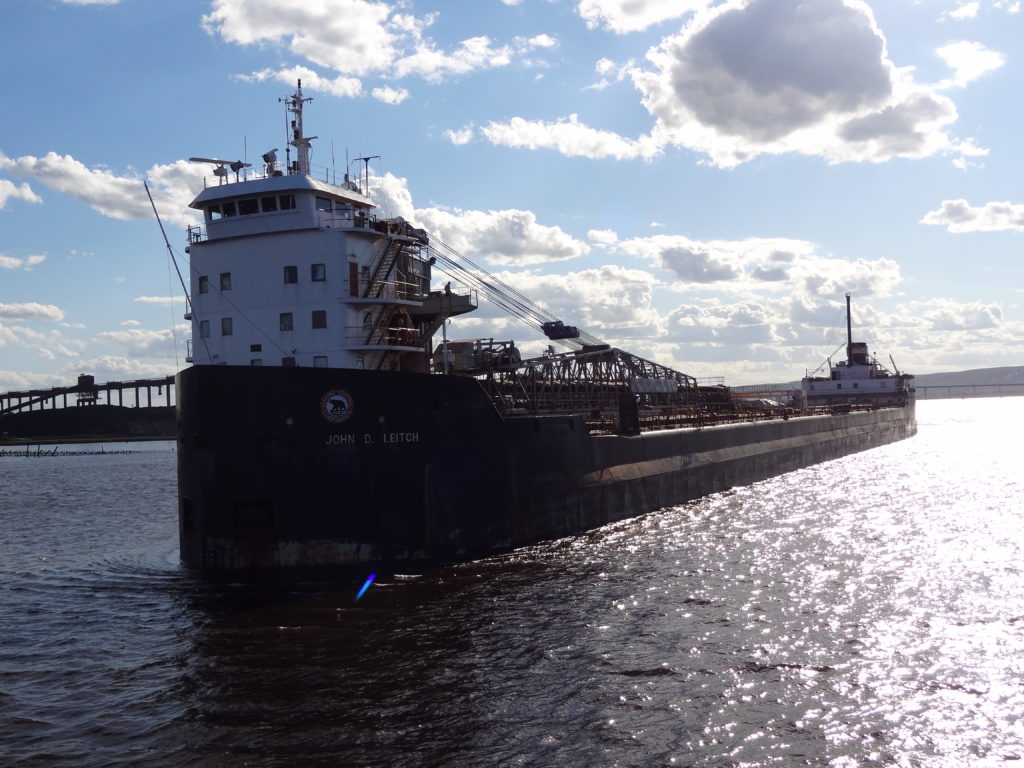
The John D. Leitch, a self-discharging bulk carrier vessel, makes its way through the Duluth-Superior Harbor in 2012. Image credit: Marie Zhuikov, Wisconsin Sea Grant
A preponderance of climate studies on the Great Lakes predict a trend toward reduced ice cover. Ice is expected to form later and melt earlier. With Wisconsin Sea Grant funding, researchers at the University of Wisconsin-Superior (UWS) are looking into how this might impact the shipping industry on the Great Lakes.
Richard Stewart, director of the Transportation and Logistics Research Center at UWS, is undertaking the yearlong study with Daniel Rust, UWS assistant professor of transportation and logistics. To begin, they conducted a literature review of Great Lakes climate studies on ice cover.
“By the year 2050, which is only 30 years away, there are expectations that there will be relatively little ice on the Great Lakes that will impede the navigation of vessels,” Stewart said.
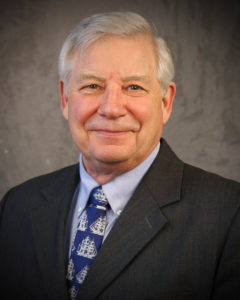
Richard Stewart. Image credit: University of Wisconsin-Superior
By collecting data on cargo movements from lake carriers along with data on the ship types and carrying capacities, they will create models that can be used by commercial ports and shipping companies. They plan to look at three main cargoes: taconite, coal and limestone, developing models first for a single vessel, then for a fleet and determining the operational and economic impacts if the shipping season is extended by 20 days. They will also conduct another analysis for a 50-day extension of the shipping season.
Stewart explains, “Say that with the existing fleet of ships, how many ships would be needed to carry that same amount of cargo if they could operate – instead of nine months per year – 10 months, 11 months and 12 months? If that cargo pie doesn’t grow bigger, we believe our research will indicate a need for fewer ships.”
A longer shipping season with fewer ships could have far-reaching ramifications, especially in Wisconsin, which is one of the nation’s largest shipbuilding and ship-repair sites. Taconite, coal and limestone terminals may no longer need to store large buffer stocks of their products to carry them through the winter since they might be able to operate year-round. Ship maintenance usually takes place during winter when ice impedes navigation. Maintenance work could switch to a short two-week period because the ships might be operating year-round. That’s what oceangoing ships do.
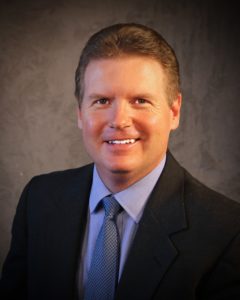
Daniel Rust. Image credit: University of Wisconsin-Superior
In fact, Stewart and Rust are looking to the Baltic Region shipping industry for guidance. “It has a similar geographic size to the Great Lakes and the same issues with ice,” Stewart said. “They operate year-round and move cargoes. We’ve visited the Baltic for preliminary research. We’re looking to see if there are similar cargoes and trade patterns that might have applicability on the Great Lakes.”
Stewart and Rust will also assess what opportunities may arise for new cargoes if the shipping season is extended by 20 days and 50 days. It could be that some commodities would move from rail and truck transport to vessel transport, instead.
Deb DeLuca, director of the Duluth Seaway Port Authority, expects the study will provide significant information. She said the possibility of having shipping seasons that are essentially ice-free could mean less risk to ships from ice and less expense needed for icebreakers. DeLuca agrees that year-round shipping could attract new commodities.
“It might open up the entire waterway to greater usage, which is a good thing because shipping is environmentally beneficial,” DeLuca said. “It takes trucks off the road. It would be a plus for all sorts of reasons, and the research allows us to plan ahead.”
The researchers are cooperating with many organizations on their study including the Lake Carriers’ Association, the U.S. Coast Guard, the U.S. Army Corps of Engineers and the ports of Milwaukee, Gary-Indiana and Duluth-Superior.
Rust will be collecting data and overseeing student workers on the project. “We’ve just begun to scratch the surface on this issue,” he said. “Obviously, climate change is happening, and we need to be ready to adapt to whatever is coming and to take advantage if there are opportunities that arise.”
The post Study will examine effects of reduced ice coverage on Great Lakes marine transportation first appeared on Wisconsin Sea Grant.
News Releases – Wisconsin Sea Grant
News Releases – Wisconsin Sea Grant
https://www.seagrant.wisc.edu/news/study-will-examine-effects-of-reduced-ice-coverage-on-great-lakes-marine-transportation/
Green infrastructure is a strategy that cities around the Great Lakes basin have increasingly been employing to ease the burden on their wastewater infrastructure and improve water quality, while deferring or avoiding costly upgrades to wastewater treatment plants. Read the full story by Great Lakes Now.
Great Lakes Commission
https://www.glc.org/dailynews/20210518-green-infrastructure
The Chicago Park District announced that a pair of endangered birds, namely Monty and Rose, has produced three eggs at their Montrose Beach Dunes Natural Area breeding grounds on the north side of Chicago, Illinois. Read the full story by The Science Times.
Great Lakes Commission
https://www.glc.org/dailynews/20210518-piping-plovers
The plan envisions a broad land bridge connecting the downtown malls to the area just north of First Energy Stadium and the Great Lakes Science Center. The 350-foot-wide greenway, known as a plinth, would soar over railroad tracks and the Ohio 2 Shoreway and provide a park-like connection to Cleveland’s biggest asset. Read the full story by cleveland.com.
Great Lakes Commission
https://www.glc.org/dailynews/20210518-cleveland-lakefront
A dispute near the northern U.S. border is threatening relations between America and Canada. Michigan Gov. Gretchen Whitmer has ordered the shutdown of the Line 5 pipeline, which carries up to 540,000 barrels a day of crude oil and natural gas. Read the full story by The Wall Street Journal.
Great Lakes Commission
https://www.glc.org/dailynews/20210518-pipeline
A formerly troublesome dirt path, connecting Bowmanville Avenue to West Beach Road of the Great Lakes Waterfront Trail in Bowmanville, Ontario was recently paved to allow for improved recreation opportunities along Lake Ontario’s northern shoreline. Read the full story by Oshawa This Week.
Great Lakes Commission
https://www.glc.org/dailynews/20210518-waterfront-trail
A group of students, researchers and volunteers at the University of Toronto in Toronto, Ontario — called the U of T Trash Team — are dumping plastic bottles with GPS trackers to pinpoint exactly where trash goes in the water to help determine ways to retrieve it. Read the full story by Yahoo News.
Great Lakes Commission
https://www.glc.org/dailynews/20210518-ontario-trash
On this day May 18, 1894, the Milwaukee-built canal schooner Lem Ellsworth foundered on Lake Michigan taking her crew of seven with her. Read the full story by On Milwaukee.
Great Lakes Commission
https://www.glc.org/dailynews/20210518-lem-ellsworth
The Ohio Department of Natural Resources awarded money for 150 new water quality projects on private property in the Lake Erie watershed, mostly to create new wetlands, the state agency said. Read the full story by the Sandusky Register.
Great Lakes Commission
https://www.glc.org/dailynews/20210518-wetland-projects
The town of Cobourg, Ontario will begin its annual spring removal of built-up sediment by dredging the harbour and area. Read the full story by CHUC- Cobourg, Ontario.
Great Lakes Commission
https://www.glc.org/dailynews/20210518-dredging
NCEI News Feed
http://www.ncei.noaa.gov/news/using-ai-listen-and-learn-about-humpback-whales
As the COVID-19 pandemic closed animal shelters to the public, Detroit-area pet rescue and adoption organizations had to come up with new ways to connect their dogs and cats to families.
The post Pandemic creates challenges, opportunities for animal shelters first appeared on Great Lakes Echo.Great Lakes Echo
http://greatlakesecho.org/2021/05/18/pandemic-creates-challenges-opportunities-for-animal-shelters/
Demand for mountain bikes has skyrocketed.
The post Mountain biking sees popularity climb during pandemic first appeared on Great Lakes Echo.Great Lakes Echo
http://greatlakesecho.org/2021/05/18/mountain-biking-sees-popularity-climb-during-pandemic/
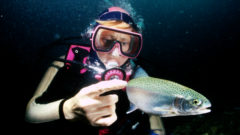
I Speak for the Fish is a new monthly column written by Great Lakes Now Contributor Kathy Johnson, coming out the third Monday of each month. Publishing the author’s views and assertions does not represent endorsement by Great Lakes Now or Detroit Public Television.
Great Lakes Now
https://www.greatlakesnow.org/2021/05/i-speak-for-the-fish/
Construction of a streambank restoration and pedestrian bridge replacement project will soon begin in Petrifying Springs Park, Wisconsin, on a section of the Pike River that is the most substantial stretch of publicly owned river within the greater urban Kenosha area and has been termed a green infrastructure hub in the Pike River Watershed-based Plan. Read the full story by Kenosha News.
Great Lakes Commission
https://www.glc.org/dailynews/20210517-wisconsin-restoration
H2Ohio, a voluntary Ohio program that works closely with local farmers to reduce Lake Erie’s harmful algal bloom problem, has indicated in its 2020 annual report that the Ohio Department of Agriculture has entered into agreements with 1,815 producers across 1,092,852 acres of farmland, representing approximately 44% of the targeted cropland project area. Read the full story by WTOL-TV – Toledo, OH.
Great Lakes Commission
https://www.glc.org/dailynews/20210517-h2ohio-water-quality
About halfway between Racine, Wisconsin, and Holland, Michigan, sensors keep close tabs on the temperature of Lake Michigan at a depth of 492 feet and have reported this data almost hourly for 30 years. This 30 year dataset indicates that the depths of Lake Michigan are warming and the annual “turnover” of the lake from warm to cold is changing. Read the full story by WTMJ-TV – Milwaukee, WI.
Great Lakes Commission
https://www.glc.org/dailynews/20210517-wisconsin-climate
It has been 16 months since a severe storm wreaked havoc on southeast Wisconsin’s shoreline, damaging popular pathways. Moving forward, the City of Racine not only wants to fix the damage, but wants to do so in a way that lessens the potential destruction of future storms amid rising waters of Lake Michigan. Read the full story by The Journal Times.
Great Lakes Commission
https://www.glc.org/dailynews/20210517-wisconsin-shoreline
The Port of Monroe has the distinction of being the only Michigan port on Lake Erie and the only one created by Public Act (PA) 234 of 1925, also known as the Port Districts Act. Read the full story by The Monroe News.
Great Lakes Commission
https://www.glc.org/dailynews/20210517-shipping-port
Enbridge, the Canadian energy company, claims the state of Michigan has no authority to enforce a deadline to shut down operation of Line 5, and will only shut down the oil pipeline if ordered by a federal court or their regulator. Read the full story by WDET – Detroit, MI.
Great Lakes Commission
https://www.glc.org/dailynews/20210517-enbridge-line-5
The Saint Lawrence Seaway Development Corporation was renamed the Great Lakes St. Lawrence Seaway Development Corporation by U.S. Congress via the 2021 Consolidated Appropriations Act, to “acknowledge the Corporation’s long-standing contributions and important to the Great Lakes region and economy.” Read the full story by WWTI-TV – Washington, D.C.
Great Lakes Commission
https://www.glc.org/dailynews/20210517-seaway
New data from the U.S. Army Corps of Engineers’ Detroit office show that all of the lakes have lower levels, with Lake Ontario experiencing the largest drop at 28 inches. Read the full story by Milwaukee Journal Sentinel.
Great Lakes Commission
https://www.glc.org/dailynews/20210517-waterlevels
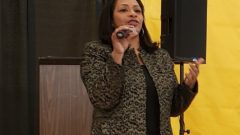
President Joe Biden has put a spotlight on environmental justice like no president before him, and that’s good news for Regina Strong.
“I feel like environmental justice is having a moment,” Strong told Great Lakes Now last week. She was referring to a recent indication that U.S. EPA Administrator Michael Regan may be willing to engage more than his predecessors with state and local governments on issues important to communities.
Great Lakes Now
https://www.greatlakesnow.org/2021/05/environmental-justice-michigan-goal-national-leader/
Urban areas are getting hotter. Trees can help.
The post Trees please: A move to reforest formerly redlined Great Lakes cities first appeared on Great Lakes Echo.Great Lakes Echo
http://greatlakesecho.org/2021/05/17/trees-please-a-move-to-reforest-formerly-redlined-great-lakes-cities/
Current Watches, Warnings and Advisories for Brown (WIC009) Wisconsin Issued by the National Weather Service
https://alerts.weather.gov/cap/wwacapget.php?x=WI1261A084EF18.SpecialWeatherStatement.1261A0913AC0WI.GRBSPSGRB.3b77a733acfe35fc01f412b80021d336
Governor Cuomo signed legislation extending the moratorium on water and other utility shutoffs to assist residents still affected by the pandemic. “Freshwater Future applauds Senator Parker, Assembly Member Richardson and Governor Cuomo for their leadership in ensuring all New Yorkers have access to tap water in their homes to fight this pandemic,” said Kristy Meyer, Associate Director at Freshwater Future. “Now we must work together to ensure all New Yorkers have access to safe, clean and affordable water even after the moratorium has expired.”
Thanks to all of our New York friends for sending messages to the Governor to help get this moratorium in place.
The more we learn about PFAS “forever chemicals,” the more clear it is that they are harmful to humans, wildlife, and the environment. Fortunately, the U.S. EPA is now considering action to limit the dumping of PFAS into our rivers, lakes, and streams. Please sign on to this petition to support this action to protect our waters and source of drinking water for millions of people. Chemical companies are fighting to stop or weaken the proposal. In fact, last week one company filed a lawsuit against the State of Michigan to invalidate recent standards adopted for levels of certain PFAS in drinking water. That’s why it is so crucial that EPA hears from us — so that the agency follows through and takes meaningful action. To sign on to the petition now, click HERE.
An eviction notice was posted on a gate to the Line 5 pipeline by hundreds of protesters on Thursday. Representatives from several Michigan tribes and residents were there to support the shutdown of the pipeline and recent orders by Michigan Governor to revoke the easement. The company has continued operating the 68-year old pipeline.
Funding from the Great Lakes Restoration Initiative will support up to 24 projects to reduce stormwater runoff carrying polluted runoff to Great Lakes waters with an emphasis on reducing nutrients from agricultural runoff. To find out more about this funding opportunity visit this website.
Chicago resident and student at the University of Illinois at Chicago (UIC) Freshwater Lab, Amy Heldman has created an art activist project entitled “Thinking Relationships to Lake Michigan: An Art Collage for Reflection” which draws inspiration from city residents and reflects on people’s deep personal connections to the Lake. In this week’s blog post, Amy discusses her course project details and her meaningful conversations with strangers about water. Read more here. This summer, Amy will assist Freshwater Future with our lead in drinking water program as an intern.
Blog – Freshwater Future
https://freshwaterfuture.org/freshwater-weekly/freshwater-weekly-may-14-2021/
Guest Blog by Amy Heldman
As someone residing near Chicago, I often visit the lakefront whenever I am in the city. However, only recently after taking an eye-opening course, The University of Illinois at Chicago (UIC) Freshwater Lab, did I begin to connect my feelings for Lake Michigan to art activism.
When I heard we had the option to do a project in any sort of medium we wanted, I immediately took the chance to unleash my love for collage making. I wanted to foster the power of storytelling to create an outline of Lake Michigan, holding inside people’s connection to the lake. I took a few trips to the lakefront and interviewed people asking them the questions, “Why do you visit the lake?” and “What do you love about Lake Michigan?” to try and inspire reflection among Chicago residents. I got many responses that were as simple as two word responses, to some that even wrote poems. Although different, each response is beautiful in its own way, because each person’s connection is unique to themselves.
I also wanted to use the power of contrast in my collage, so I made the background a series of news articles on Lake Michigan issues to sit behind people’s love for the lake to emphasize why it needs to be protected.

As a student studying urban planning, much of my undergraduate career has consisted of numerous research papers, GIS projects, and data analysis, and although they can be quite fun, the feeling of virtual school burnout hit me hard. This art collage was my way of expressing creativity and having meaningful conversations with strangers about water. A few themes that arose from my interviews were: therapy, creativity, solitude, and joy. It was inspiring to hear from so many how the lake has been helping them survive the pandemic. I spoke to one woman on her bike, and she explained how Lake Michigan reminds her of expansion. With being locked up for so long, it gave her peace of mind knowing that the world is not just in her house but it is borderless much like our water. After hearing responses like hers, I grew extremely inspired by the love Chicago residents have for Lake Michigan. Although it is usually seen as a tourist attraction, my collage amplifies the temple Lake Michigan is to Chicago residents. It is their safe place after a hard week, a place where they get their best ideas, and a place for mental clarity and reflection.
I want to thank Chicago residents for contributing to this piece, as well as the UIC Freshwater Lab for allowing me to do this. I hope that anyone who views this collage feels inspired by the significance Lake Michigan holds to its admirers and continues to advocate for protection of this life resource.
Blog – Freshwater Future
https://freshwaterfuture.org/call-to-action/thinking-relationships-to-lake-michigan-an-art-collage-for-reflection/
Dry weather is putting the Great Lakes’ water levels on a downward trend, with new forecasts for the summer placing water levels at depths where boaters and shipping won’t have to worry about low water levels or adjusting dock heights due to record high water. Read the full story by MLive.
Great Lakes Commission
https://www.glc.org/dailynews/20210514-waterlevels
Tribes in Michigan are legally entitled to hunting and fishing rights in Michigan through historic treaties. However, because wildlife and fish often cross jurisdictional boundaries, tribes, state and federal agencies must work together to manage wildlife populations and reconcile conflicting science and management priorities. Read the full story by Great Lakes Now.
Great Lakes Commission
https://www.glc.org/dailynews/20210514-conservation-coordination
Taconite iron ore shipments on the Great Lakes are trending up, and the Port of Duluth-Superior is experiencing a bustling start to the shipping campaign. This year’s shipments represent a 48% increase over the 2020 pace and a 23% improvement on the five-season average. Read the full story by Duluth News Tribune.
Great Lakes Commission
https://www.glc.org/dailynews/20210514-taconite
The Chicago Park District announced that Monty and Rose, a pair of endangered Great Lakes piping plovers, have produced three eggs at their breeding grounds at Montrose Beach Dunes Natural Area on Chicago’s north side. Read the full story by WLS-TV – Chicago, IL.
Great Lakes Commission
https://www.glc.org/dailynews/20210514-plover-eggs
Anishinaabe chiefs of the upper Great Lakes are calling for a ban on aerial spraying of the herbicide across the Robinson Huron Treaty area in northern Ontario. Their requests are receiving parliamentary support by Ontario MPs in the Green Party. Read the full story by APTN News.
Great Lakes Commission
https://www.glc.org/dailynews/20210514-anishinaabe
The federal government announced on Thursday that it no longer needs the Cleveland Harbor West Pierhead Lighthouse, and would be giving away the lighthouse for free to eligible, federal, state or local organizations. Read the full story by WOIO-TV – Cleveland, OH.
Great Lakes Commission
https://www.glc.org/dailynews/20210514-free-lighthouse
Eighty-one percent of registered northwest Ohio voters want stronger rules and regulations on large livestock facilities known as concentrated animal feeding operations, or CAFOs, according to results of a new poll released Thursday. Read the full story by the Toledo Blade.
Great Lakes Commission
https://www.glc.org/dailynews/20210514-cafos